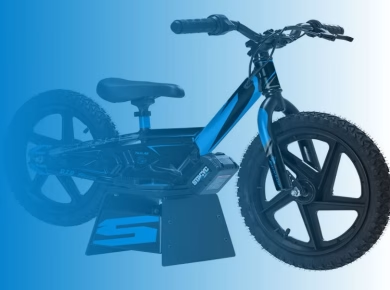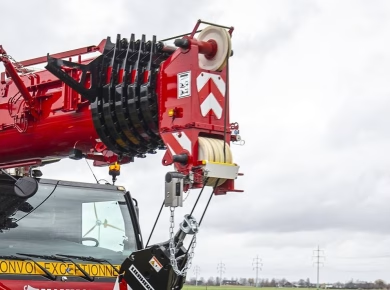The hum of machinery can often drown out the more subtle sounds of danger lurking in a maintenance shop. While the whir of drills and the thud of heavy equipment might be music to our ears, they can also mask the risks associated with mechanical hazards. These risks don’t just present themselves as minor inconveniences; they can lead to serious injuries or fatalities if not managed properly. As someone who has spent years navigating the complexities of site management and safety training, I’ve witnessed firsthand how easily a moment of oversight can escalate into a life-altering event.
Understanding Mechanical Hazards
Mechanical hazards refer to the potential for injury or damage resulting from the operation of machinery and tools. These hazards can be broadly categorized into a few types: moving parts, sharp edges, and flying debris. Each category presents unique challenges, especially in high-paced environments like construction sites or maintenance shops where equipment is frequently in use.
Moving Parts
The most obvious mechanical hazard is the moving components of machinery. Gear systems, belts, and pulleys can pose significant risks if not properly safeguarded. For instance, I once worked alongside a technician who was adjusting a conveyor belt without ensuring it was powered down. A momentary lapse in judgment led to a near-miss, where his hand almost got caught in the machinery. This experience underscored the importance of adhering to lockout/tagout procedures—ensuring that machinery is completely shut off and unable to be restarted before maintenance begins.
Sharp Edges
Sharp edges and points are another major concern. Whether it’s the blade of a saw or the edge of a metal sheet, the potential for cuts and lacerations is high. One winter, while overseeing a site, I noticed workers using tools without proper guards or protective equipment. It was a simple oversight, but it could have resulted in serious injuries. I urged the team to incorporate proper personal protective equipment (PPE) into their daily routines, emphasizing the necessity of gloves and appropriate clothing to minimize injury risks.
Identifying Hazards in Your Environment
Conducting regular hazard assessments is critical in maintaining a safe work environment. It’s not just about having safety protocols in place; it’s about actively identifying risks before they lead to accidents.
Regular Inspections
I have always prioritized regular inspections of machinery and work areas. Developing a systematic approach to identifying mechanical hazards can save lives. For example, implement a checklist that includes reviewing machinery for wear and tear and ensuring that safety guards are in place and functional. This proactive approach can help in catching potential hazards before they escalate.
Employee Training
Training employees on recognizing mechanical hazards is equally important. In my experience, many workplace accidents stem from a lack of understanding of equipment operation. Conducting hands-on training sessions where workers can interact with machinery in a safe environment helps reinforce safe practices. It’s crucial for employees to understand not just how to operate equipment, but also how to identify potential hazards.
Creating a Safety Culture
Safety isn’t just a checklist; it’s a culture that must be fostered throughout the organization. Empowering employees to prioritize safety can lead to a more vigilant workplace.
Open Communication
Establishing an open line of communication where employees feel comfortable reporting unsafe conditions is vital. When I was managing a large project, I implemented a “safety suggestion box” where team members could anonymously submit their concerns or suggestions. This initiative not only identified previously overlooked hazards but also encouraged a collective commitment to safety.
Incentives for Safe Practices
Additionally, recognizing and rewarding safe behavior can further instill a culture of safety. Implementing incentive programs for teams that maintain accident-free records can motivate workers to take safety seriously. This creates a positive feedback loop, where workers understand that their safety is valued and rewarded.
Utilizing Technology for Safety
In an age where technology is ever-evolving, leveraging it to enhance safety measures is a smart move.
Safety Apps and Software
My experience with safety management software has shown that these tools can streamline safety procedures and incident reporting. Many apps allow for real-time reporting of hazards, which can be crucial for quick responses. When a colleague of mine integrated a safety app into their operations, they saw a significant reduction in incident reports, as workers could easily report hazards from their mobile devices.
Wearable Technology
Wearable technology, such as smart helmets equipped with sensors that detect proximity to moving machinery, can also be a game-changer. These innovations not only enhance awareness but can provide real-time alerts to potential dangers, thereby reducing the risk of accidents.
Conclusion: Prioritizing Safety in Maintenance Shops
Mechanical hazards are often the silent killers in maintenance shops, but they don’t have to be. By fostering a culture of safety through regular inspections, comprehensive training, open communication, and the use of technology, we can significantly reduce the risks associated with these hazards. The scars of past accidents remind us of the importance of vigilance, but they also inspire us to take proactive measures to protect ourselves and our teams. As safety professionals, it is our responsibility to provide the knowledge and tools necessary to navigate these challenges effectively. Remember, a safe workplace is not just a regulatory requirement; it is a moral obligation to ensure that everyone returns home safely each day.



